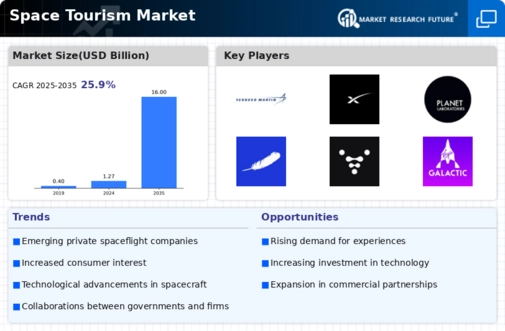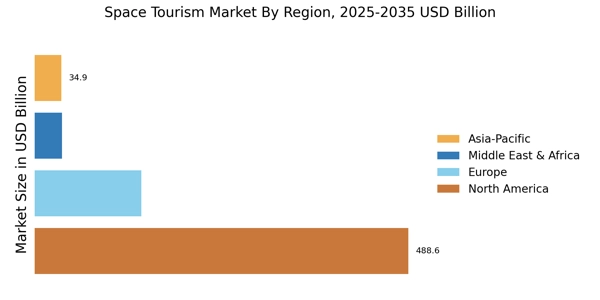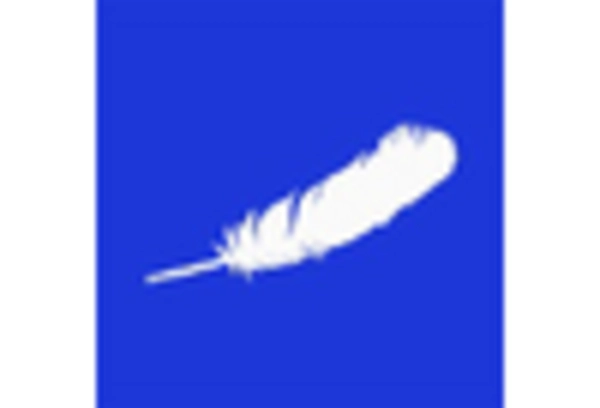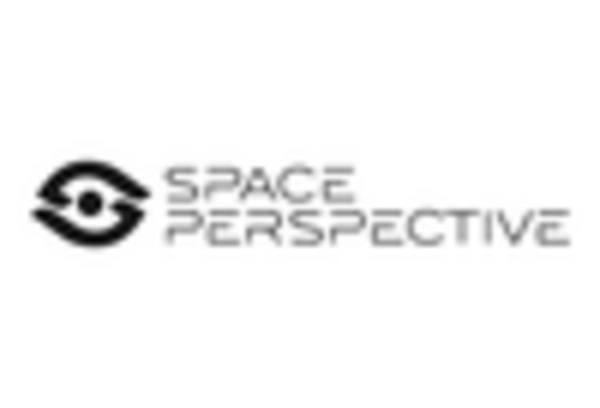Technological Innovations
The Space Tourism Market Industry is experiencing a surge in technological innovations that enhance the feasibility and safety of space travel. Companies are investing heavily in developing reusable rocket technology, which has the potential to significantly reduce costs associated with space tourism. For instance, advancements in propulsion systems and spacecraft design are making it possible to offer suborbital flights at competitive prices. The market is projected to reach a valuation of approximately 1.5 billion USD by 2027, driven by these technological breakthroughs. Furthermore, the integration of artificial intelligence and automation in spacecraft operations is likely to improve the overall passenger experience, making space travel more accessible to a broader audience.
Sustainability Initiatives
Sustainability is becoming a crucial consideration in the Space Tourism Market Industry, as companies strive to minimize their environmental impact. The development of eco-friendly propulsion systems and sustainable practices in spacecraft manufacturing is gaining traction. As consumers become more environmentally conscious, they are likely to favor companies that prioritize sustainability in their operations. This shift could lead to a competitive advantage for businesses that adopt green technologies and practices. Furthermore, the industry may see an increase in partnerships with environmental organizations to promote responsible tourism in space, thereby appealing to a broader audience and enhancing the overall market appeal.
Increasing Disposable Income
As disposable income levels rise in various regions, the Space Tourism Market Industry is poised for growth. Affluent individuals are increasingly seeking unique experiences, and space tourism offers an unparalleled adventure that appeals to their desire for exclusivity. Reports indicate that the number of high-net-worth individuals is on the rise, with estimates suggesting a growth of 20% in the next five years. This demographic shift is likely to create a larger customer base for space tourism companies, as more individuals can afford the premium prices associated with space travel. Consequently, the industry may witness a significant uptick in demand, leading to further investments and innovations.
Government Support and Regulation
The Space Tourism Market Industry benefits from increasing government support and favorable regulatory frameworks. Various nations are recognizing the potential economic benefits of space tourism and are actively investing in infrastructure and research. For example, the establishment of spaceports and the development of regulatory guidelines are essential for ensuring safety and promoting growth in the industry. Governments are also collaborating with private companies to foster innovation and reduce barriers to entry. This supportive environment is likely to encourage more players to enter the market, thereby expanding the range of offerings available to consumers and enhancing the overall growth trajectory of the space tourism sector.
Growing Interest in Space Exploration
The Space Tourism Market Industry is witnessing a growing interest in space exploration, driven by both scientific curiosity and the allure of adventure. As more missions to the Moon and Mars are planned, public fascination with space is at an all-time high. This interest is not only limited to scientific communities but also extends to the general public, who are eager to participate in space-related activities. Companies are capitalizing on this trend by offering experiences that allow individuals to experience weightlessness and view Earth from space. The potential for educational tourism, where participants learn about space science while enjoying the experience, could further enhance market growth.


















Leave a Comment